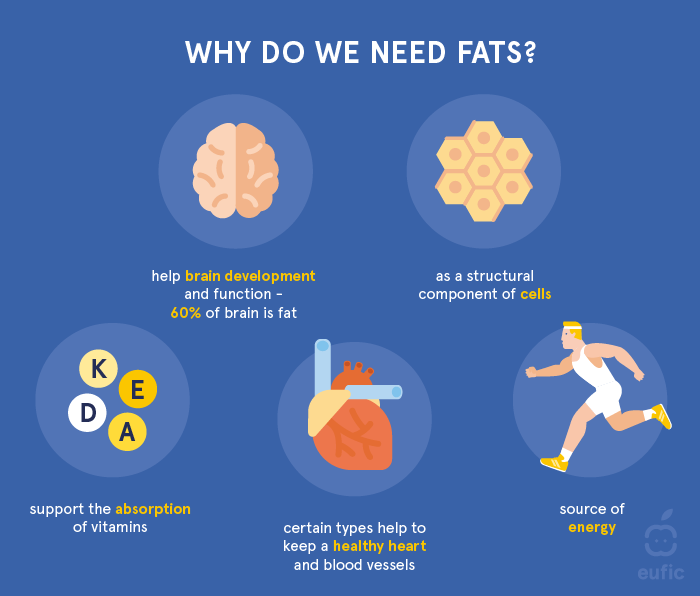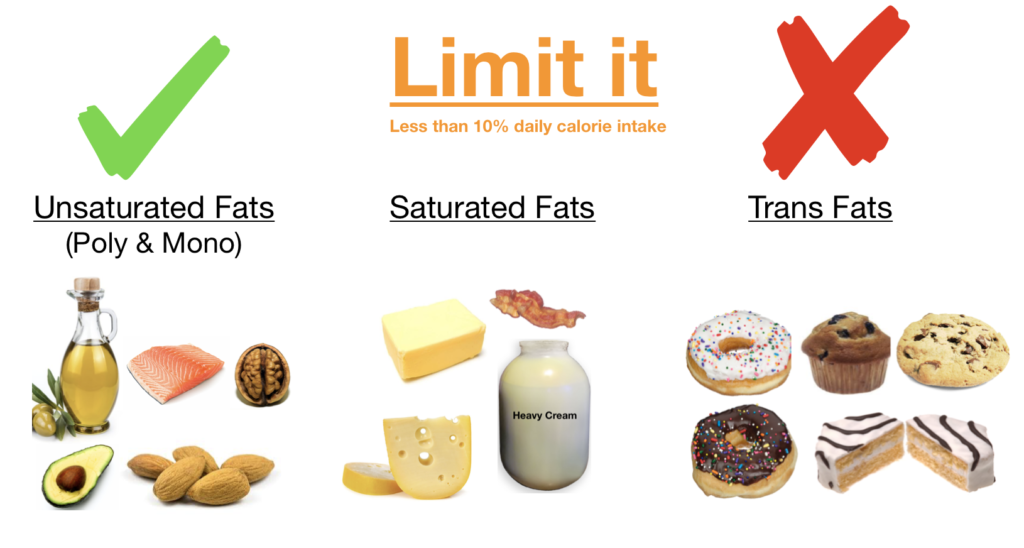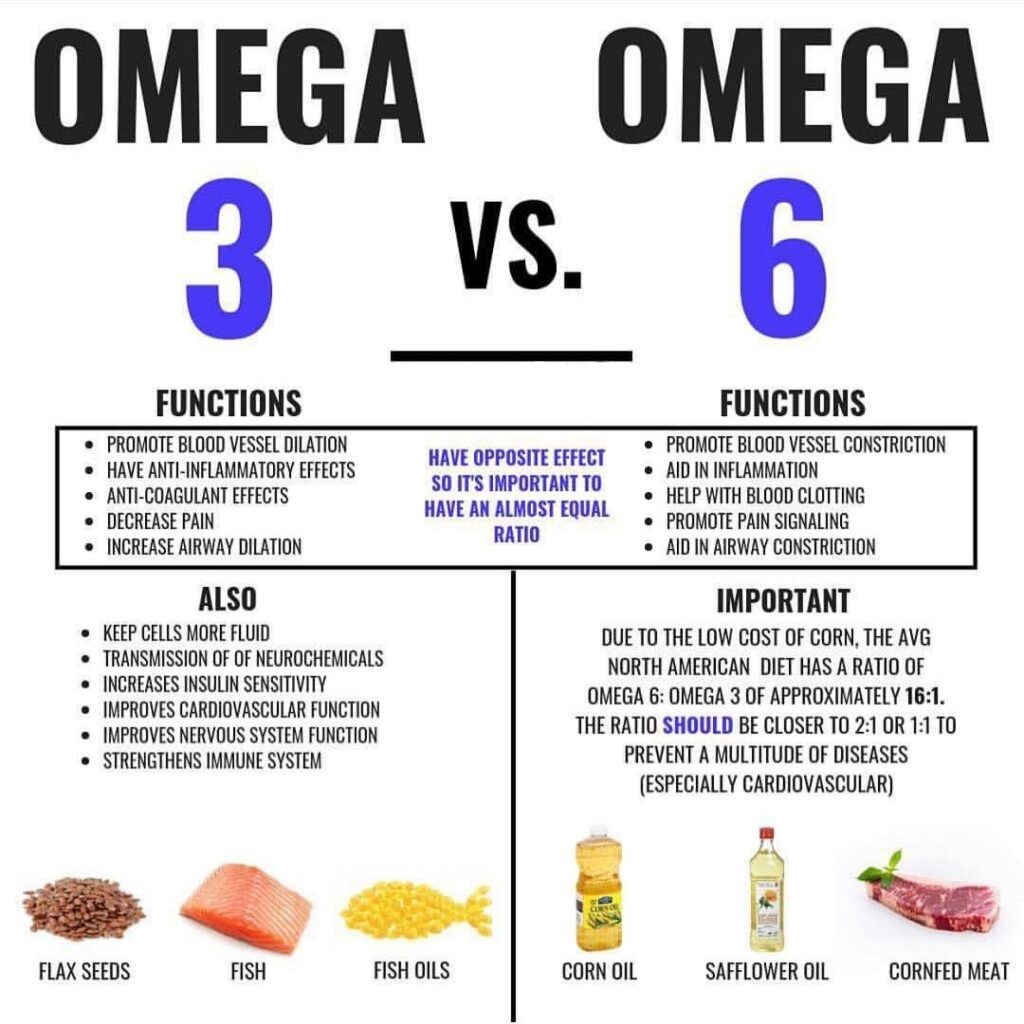Fat
Though it gets a bad rap, fat is an important nutrient that the body needs in order to function. Eating the right amount — and the right form — of dietary fat is key to maintaining good health. However, consuming too much fat or too little may cause health problems.

Function of Fat
Fat is a macronutrient. There are three macronutrients: protein, fats and carbohydrates. Macronutrients are nutrients that provide calories or energy. The amount of energy provided by the macronutrients varies: fat has 9 calories per gram, more than twice the number of calories in carbs and protein, which each have 4 calories per gram. The primary function of fat is as an energy reserve. The body stores fat, or adipose tissue, as a result of excess calorie consumption. During exercise, the body first uses calories from carbohydrates for energy. After about 20 minutes, it uses calories from stored fat to keep going. Fats also help the body absorb necessary fat-soluble vitamins (vitamins A, D, E and K). Dietary fat also helps keep hair and skin healthy, insulates the body, protects organs and fills fat cells. Fat plays a role in the diet and shouldn’t be avoided. Your body needs healthy sources of fat, also known as essential fatty acids, because the body can’t produce these fatty acids naturally. Essential fatty acids contribute to brain development, blood clotting and aid in inflammatory control.

Types of Fat
There are several types of fat — some good, some bad, some well understood and some less so. Saturated fats and trans fats are commonly considered unhealthy, while unsaturated fats — including monounsaturated and polyunsaturated fat — are considered healthy. All foods that contain fats have a mix of fat types.
Saturated Fats
Saturated fats are saturated with hydrogen molecules. According to White, saturated fat comes from animal sources, such as red meats, poultry and full-or-reduced fat dairy products. Saturated fats are solid at room temperature. Oils that are solid at room temperature, like palm oil, palm kernel oil and coconut oil, also contain saturated fats. This means that baked goods can be high in saturated fats. Saturated fat is linked to high cholesterol levels and an increased risk of cardiovascular disease. Saturated fats also tend to contain a lot of calories.
It is recommended that we should only 5 to 6 percent of calories from saturated fat. This puts someone on a 2,000-calorie-a-day diet with 120 calories or 13 grams of saturated fats per day. Up to 10 percent of calories to come from saturated fat.
Trans Fats (Trans Fatty Acids)
Trans fats are sometimes found naturally in meats or dairy, but usually in small amounts. They are “produced by the food industry for the purpose to increase shelf life of the product. This is done by adding hydrogen to liquid vegetable oils to make the oils more solid. These are called partially hydrogenated oils. They are often found in “convenient foods” like frozen pizzas. Other common sources of trans fats include baked goods, crackers, refrigerated dough, margarine and coffee creamer. Fast food restaurants often use them in deep fryers because partially hydrogenated oil does not have to be changed as often as regular oil. Trans fats are not recommended at all because of the link to heart diseases. In fact, they are often considered the worst type of fat because they both lower your good cholesterol and increase your bad cholesterol.
Triglycerides
Triglycerides are a potentially dangerous type of fat found in blood. They are associated with coronary artery disease, especially in women. The body converts any calories it doesn’t need to use right away into triglycerides, which are stored in the fat cells. They are supposed to provide energy between meals. If you eat more calories than you expend, however, the body does not burn triglycerides, and they accumulate. Most types of fat we eat become triglycerides. A blood test can reveal your triglyceride levels.
Monounsaturated Fats (MUFA)
These fats get their name because they are not saturated with hydrogen molecules and because they have a single carbon bond in the fat molecule (called a double bond). They are liquid at room temperature. Examples are canola, peanut or olive oil. . Olives and avocadoes also contain monounsaturated fats. Monounsaturated fats are known to have a heart-protective role and they have been linked to improved cholesterol levels. They may also help insulin levels and blood sugar control. It is still important to watch your intake of monounsaturated fats because of their high caloric content. Though there are no specific guidelines on how many monounsaturated fats to consume, it is suggested that most of your total fat intake should come from healthy fats.

Polyunsaturated Fats (PUFA)
Like monounsaturated fats, polyunsaturated fats are not saturated with hydrogen molecules. They get their name from having more than one carbon bond (double bond) in the fat molecule. They are liquid at room temperature. Polyunsaturated fats are found mostly in plant food sources, such as soybeans and soybean oil, sunflower oil, sunflower seeds, walnuts and flaxseeds, White said. They’re also present in fatty fish like salmon, tuna, herring, mackerel and trout.
Polyunsaturated fats have been shown to impact blood cholesterol levels leading to a decreased risk of cardiovascular disease. They also help with cell development and maintenance and add vitamin E to your diet. Polyunsaturated fats provide essential fatty acids, including omega-6 and omega-3. Though there are no specific guidelines on how many polyunsaturated fats to consume it is suggested that most of your total fat intake should come from healthy fats.
Omega-3 Fatty Acids
Omega-3 fatty acids are a polyunsaturated fat that can come from plant-based sources and are also found in fish. Omega-3 fatty acids have been shown to lower blood pressure levels. They are also important anti-inflammatories. On a cellular level, omega-3 fatty acids work like aspirin to inhibit an enzyme that produces hormones that trigger inflammation. We can get them by eating cold-water fish like salmon, herring, tuna and mackerel, as well as walnuts, olive oil and canola oil. Some people take fish oil to up their omega-3 intake. There are no standard recommendations for the amount of omega-3s you need every day. It is recommended that eating 3.5 ounces of fish at least twice a week to get a good amount of omega-3s. No one should consume more than 3 grams of omega-3s from supplements without consulting a doctor, as it may cause bleeding.
Omega-6 Fatty Acids
Omega-6 fatty acids are also polyunsaturated fats commonly found in plant-based oils. Good sources include vegetable, corn, peanut, grape seed and sunflower oils, as well as mayonnaise and many salad dressings. Omega-6 fatty acids promote healthy skin and hair growth and benefit a healthy metabolism. They also help maintain bone health and the reproductive system. In excessive amounts, some types of healthy-omega-6 fatty acids may cause the body to produce inflammatory chemicals. It is recommended that between 5 and 10 percent of calories should come from omega-6 fatty acids.

Finding the Balance
Your fat consumption should be proportional to your weight and dietary lifestyle. If you’re trying to change your body or become healthier, it should be proportional to your goals. You will need to look at how many calories you need to consume daily to maintain, lose weight, or gain weight (based on your goals). The average adult should get 20 to 35 percent of their calories from healthy fat sources. An adult eating a 2,000-calorie-a-day diet could eat 44 to 78 grams of fat in a day. Some healthy fat sources include olive oil, avocadoes, salmon, tuna, walnuts, flax seeds and sunflower seeds.
Fat Deficiency
If you eliminate fat too much, it can have serious health consequences. Mental health deficits like depression and vitamin deficiencies can occur. The vitamins A, D, E and K are fat soluble, meaning the body stores them in fatty tissue and the liver. The intestines need dietary fat to properly absorb these nutrients. These vitamins are also necessary for the health of your skin, bones and cardiovascular system, among other organs and systems. It isn’t very common for someone to be deficient in fat in their diet, most people are guilty of having too much fat in their diet. Anything over an average amount is too much. If you eat too much fat, you will likely gain weight, which is linked to health problems. Research on fat is ongoing, but some studies suggest that excess fat may play a role in heart disease, cancer and type 2 diabetes. Eating too much fat is also linked to high cholesterol. You need at least a small amount of fat in your diet to provide the essential omega-3 and omega-6 fatty acids your body can’t make and to help with the absorption of fat-soluble vitamins. If you don’t get at least 15 percent of your calories from fat, you could develop an essential fatty acid deficiency or a deficiency of one or more of the fat-soluble vitamins A, D, E and K. Vitamin A deficiency symptoms can include dry skin, night blindness, increased susceptibility to infections and problems with bone and tooth development. Not absorbing enough vitamin D can cause soft and weak bones, and too little vitamin K can lead to increased bleeding. Two types of omega-3 fatty acids, eicosapentaenoic acid (EPA) and docosahexaenoic acid (DHA), are essential for brain development. Not getting enough DHA may result in learning deficits and increase the risk for certain types of dementia, including Alzheimer’s disease. The omega-6 fat arachidonic acid is also an important component of brain tissue.

Dr Saranjeet Singh
Fitness & Sports Medicine Specialist
Lucknow








Sir ji
, thanks for valuable knowledge sharing with your followers. 🙏🙏
Thank you for appreciating my work.
Very well structured article sir. Congratulations
Thank you Dev.
Thanks for discussing your ideas here. The other matter is that any time a problem appears with a personal computer motherboard, folks should not consider the risk with repairing this themselves because if it is not done correctly it can lead to irreparable damage to the full laptop. Most commonly it is safe to approach a dealer of any laptop for that repair of motherboard. They’ve already technicians that have an expertise in dealing with pc motherboard issues and can get the right diagnosis and perform repairs.
very good publish, i definitely love this web site, keep on it
Thanks.
A very good insight on the importance of fats in our diet.
I was wondering if you ever thought of changing the page layout of your site? Its very well written; I love what youve got to say. But maybe you could a little more in the way of content so people could connect with it better. Youve got an awful lot of text for only having 1 or two pictures. Maybe you could space it out better?
Thank you.